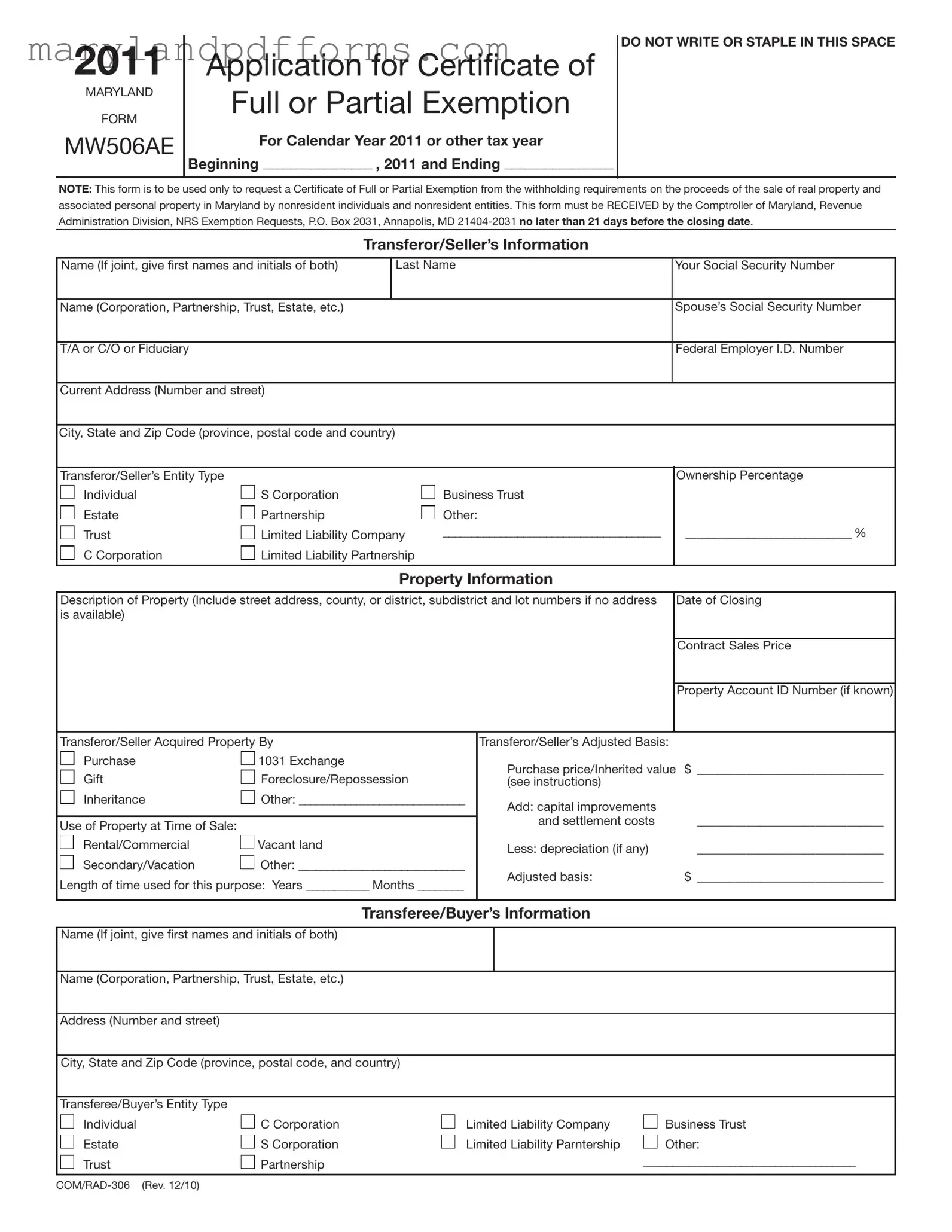The Maryland MW506AE form is used to apply for a Certificate of Full or Partial Exemption from withholding requirements on the sale of real property and associated personal property in Maryland. This applies specifically to nonresident individuals and nonresident entities. Completing this form allows the seller to request exemption from tax withholding on the proceeds from the sale.
Eligible filers include nonresident individuals, fiduciaries, C corporations, S corporations, limited liability companies, and partnerships. If the transferors or sellers are married and filing a joint Maryland income tax return, they must still submit separate MW506AE forms for each individual. It is crucial to ensure that the completed form is submitted on time to avoid any issues.
The completed MW506AE form must be received by the Comptroller of Maryland no later than 21 days before the closing date of the sale. This deadline is critical to ensure that the application is processed in time and that the seller receives the appropriate exemption certificate.
The form requires detailed information, including:
-
Transferor/Seller’s name, Social Security number, and address.
-
Property information, including description, contract sales price, and property account ID number.
-
Reason for exemption, which must be supported by appropriate documentation.
-
Calculation of tax to be withheld, if applicable.
Providing accurate and complete information is essential for the approval of the exemption request.
What documentation is needed to support the exemption request?
Documentation varies based on the reason for the exemption. Common requirements include:
-
For a principal residence transfer, provide a copy of the contract of sale or HUD-1 settlement sheet.
-
For tax-free exchanges, include a letter from the qualified intermediary.
-
If the transfer is of inherited property, submit a copy of the death certificate.
It is crucial to attach all necessary documentation to avoid delays or denial of the exemption request.
To calculate the tax to be withheld, follow these steps:
-
Determine the amount subject to tax withholding by subtracting the adjusted basis from the contract sales price.
-
Identify the applicable tax rate: 8.25% for business entities or 6.75% for individuals.
-
Multiply the amount subject to tax by the tax rate to find the total tax to be withheld at closing.
This calculation must be completed for the application to be considered valid, especially if requesting a partial exemption.
